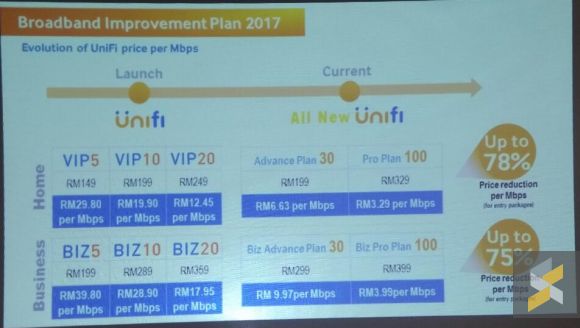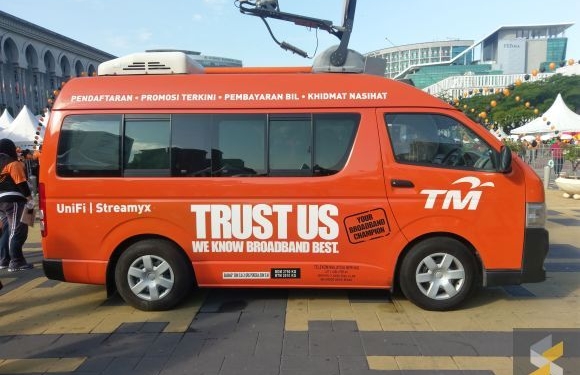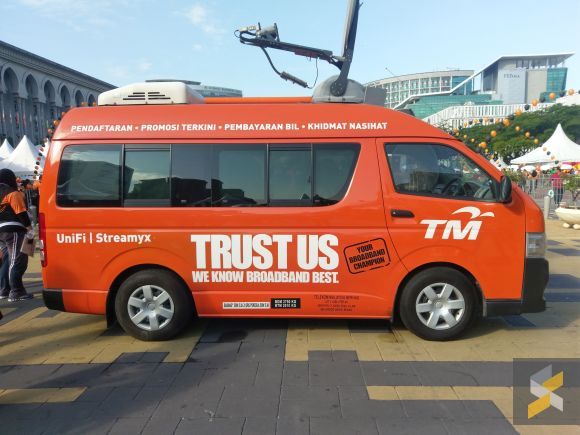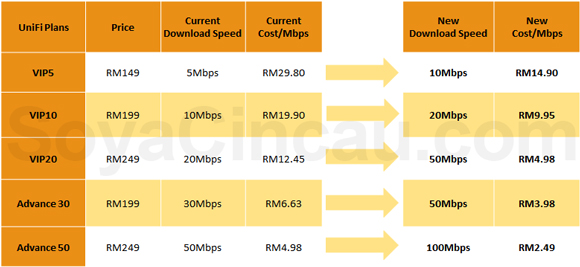Easily one of the most exciting parts of the 2017 Budget announcement, at least as far as technology is concerned, was the part about how fixed-line broadband services like UniFi, Streamyx, Maxis Fibre and Time Broadband would be offering higher connectivity speeds for a lower price.
The announcement last Friday itself was rather vague, without the nitty gritty details on how this would all play out, so a lot was left to speculation. Now, however, TM has just given us a sneak peak into their master plan on how they’re going to put the initiatives set out in the 2017 Budget, in motion.
I’ll be frank, TM didn’t reveal any specifics during their briefing today, nor did they unveil any concrete upgrade plans for their existing broadband subscribers. What they did reveal was the fact that they are committed to bringing down the price of cost per Mbps in the long run.

TM said, in their press conference today, that they have already been working to bring the cost per Mbps since the days of UniFi’s VIP5, VIP10 and VIP20 plans. With the existing UniFi Advance 30, Advance 50 and Pro 100, the service provider has brought the cost per Mbps down to less than RM4/Mbps. Come 2017, they’re looking to improve that even further. How? Well, here’s what they said.
The first key takeaway from their presentation is that TM wants to double the average broadband speeds for residential UniFi customers at the same price. They’re going to do it by upgrading all existing UniFi customers currently on VIP5, VIP10, VIP20, Advance 30 and Advance 50 (barring technical limitations) without having them pay more than they’re already paying. This upgrade will be rolled out to “eligible” customers starting January 2017 and will be done so in stages.
Although we don’t know exactly what the upgrade is going to look like, logic dictates that the upgrade would push UniFi subscribers to the next highest plan that was closest to a two-fold increase in download speed. If that was the case, then the existing UniFi plans could look something like this:
Looking at our little table, it looks like TM could bring the cost/Mbps down to below RM3/Mbps, which is not an insignificant amount of savings. But then you have the problem of the people who are on the UniFi Advance 30 plan. From our educated guesswork, the people who subscribe to this plan will be the only ones to get less than double the speed for the same amount of money that they’re currently paying.
Considering this is the current entry-level UniFi plan, I don’t imagine many would be satisfied with being the only subscribers to get the short stick from the draw.
Besides the new upgrades and plans for new/existing subscribers, TM also mentioned that they will be offering a new “greater value broadband package” for their non-UniFi subscribers come the new year (also subject to technical availability). However, they were very careful not to use the word ‘Streamyx’ which leads us to believe that these could a brand new plan that existing non-UniFi subscribers will have to resubscribe to if they want to benefit from the “greater value”.
So that’s everything TM said. But what does it all mean and what can we realistically expect come January of 2017?
Well, the first thing you should take note of is what TM is actually saying. They said that “under the initiative, the average broadband speeds for residential UniFi customers will be doubled at the same price”. The keyword here is ‘average’, not all.
Of the 900,000 UniFi subscribers, the only thing TM promised to double was the average speed, and they can do it in a number of ways. The first would be to just double everyone’s speed and be done with it. Happy subscribers, happy life.
However, you also need to consider the fact that TM could just double the speed of their low-speed plans (for example, VIP5, VIP10 and VIP20) and give a minor speed boost to their UniFi Advance plans to bring the overall average up.
Secondly, there is also a chance that new UniFi subscribers, who subscribe in January 2017, will not get the speed upgrade because, in the press release, TM only talked about upgrading existing customers.
Keep in mind that we’re not saying this will happen, only that it could happen.
What do you think?










